► New Revolution A-One reviewed
► Carbonfibre prototype-style racing car
► 3.7-litre V6, 390bhp and big downforce
Could this be a revolution in more than name only? The Revolution A-One is a brand-new track and race car from British constructor Revolution Racecar Co., and it’s taking a fresh approach to its chosen market.
Low-slung, low-volume, prototype-style sportscars are in plentiful supply around the world, but the Revolution offers something different courtesy of inventive chassis design, a philosophy based around low running costs, and performance to bridge the gap between GT cars and LMP3 racers.
As the absence of headlights suggests, the track-only Revolution A-One isn’t road-legal (although some mean-looking headlights are available for endurance racing in the night).
Click here to read CAR’s experiece of racing a Revolution alongside Sir Chris Hoy in 2020
Revolution A-One: the background
The driving force behind Revolution is Phil Abbott, previously co-founder of Radical Sportscars, and in many ways the A-One is a spiritual successor to Radical’s popular SR3 model. Like the SR3, the Revolution A-One is an open-top, two-seater sports prototype but its design is very much of the 21st century, with a carbonfibre monocoque chassis, sophisticated aerodynamics and electronics, larger dimensions and even higher speeds.
Crucially, the A-One has hit its target of a price below £100k (ex VAT). Whilst £98,650 is not a small amount of money, it’s justifiable given the technology within the car, and a price tag with five rather than six figures gets the A-One under an important psychological barrier for prospective customers.
N.B. Since this first review in 2019, the A-One’s price has grown to £139k (although its spec and performance have grown too).
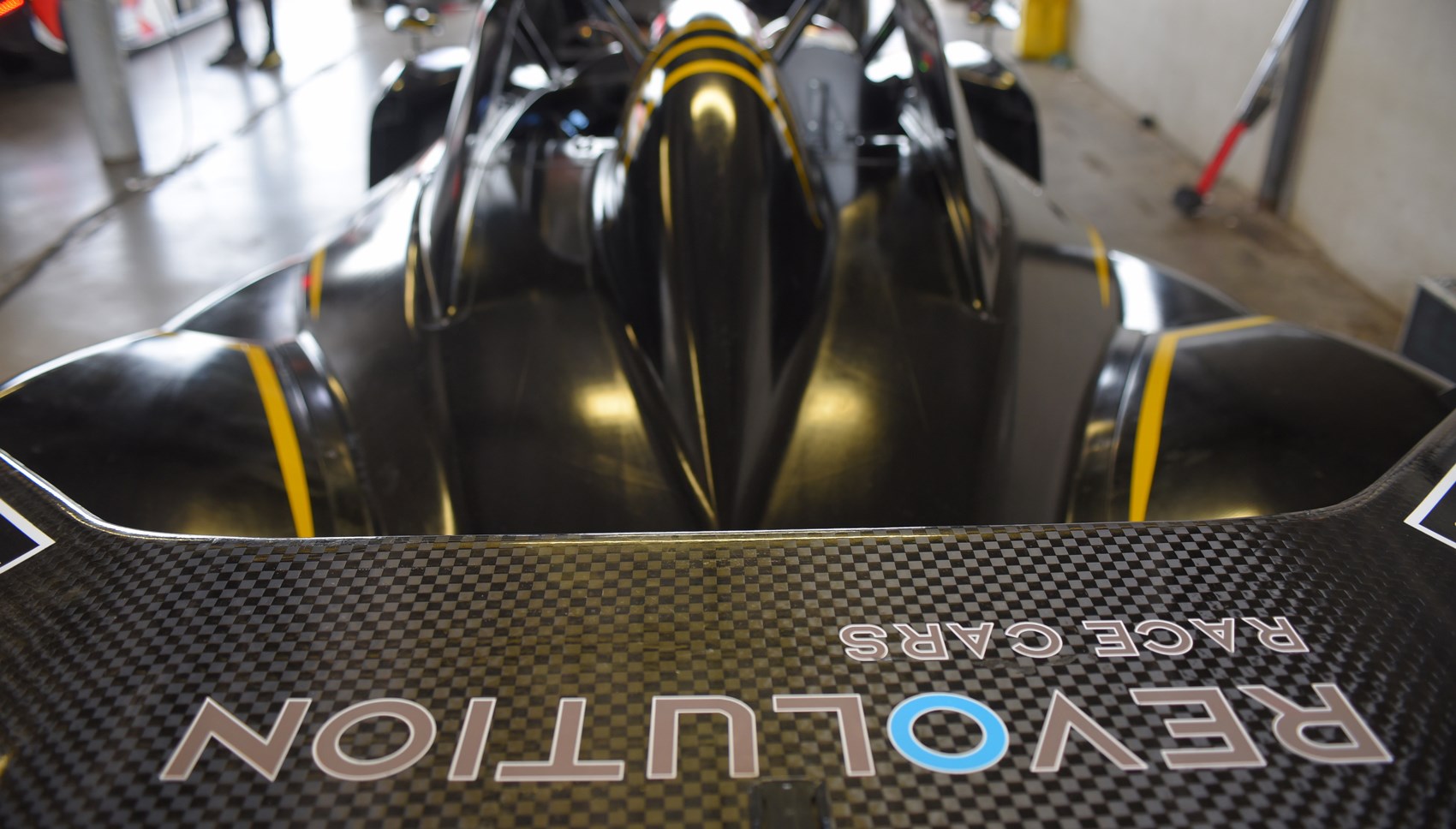
Those target customers are anticipated to be a mix of racers and committed trackday enthusiasts. Revolution hopes to attract some drivers who might otherwise have considered GT racing, or existing sports prototype drivers looking for a bridge to LMP (Le Mans Prototype)-level racing. It also hopes to attract well-heeled trackday-goers who might otherwise have considered, say, a track-focused supercar which would potentially be more fragile and slower against the stopwatch.
The design story
Unusually for a track/race car, where form is traditionally in thrall to function, the A-One was styled first, and engineered around an idealised shape. The stylist is renowned car designer Simon Cox, formerly design director at GM and Infiniti. The styling began as a clay model, which was then scanned to create the full-size bodywork. The shape is still evolving, the A-One’s flanks having turned from sawn-off shards on the original prototype to moulded sections during aerodynamic development.
It’s a distinctive shape with attitude and no little presence. At the front, it’s almost akin to an open-wheeler, with big channels of clear air between the wheels and nose cone. ‘The open front was actually Simon Cox’s idea, but it also works well from an aerodynamic point of view, with a reduced frontal area and flat surfaces to manage airflow,’ Phil Abbott explains.
Although the A-One develops a great deal of downforce – currently something in the order of 7000N at top speed (circa 160mph) – it comes principally from below the car, rather than on top. The team didn’t want the distinctive shape to be spoiled (pun intended), and the bulk of the Revolution’s aero performance comes from the large diffuser and sections in its floor. Even greater downforce could have been achieved, but Revolution want the car to be driveable and predictable at its limits for drivers of all levels.
‘We wanted it to look expressive, and different from any other track car out there,’ says Revolution co-founder Romain Rousseaux, explaining that they wanted it to be a recognisable shape that could turn the eye of somebody who might ordinarily walk past a sports prototype to ogle a GT car instead.
A roofed Revolution may follow – which will no doubt look even more dramatic still.
What’s it like to sit in?
First you need to either stretch your leg over or stand on the flat floor section extending from the car’s flanks (you can see where all that downforce comes from) and then scale the carbon tub’s high sides.
You sit in a reclined driving position (although less recumbent than it could have been, as the designers didn’t want to make it feel too alien to drivers migrating from road cars), with your feet elevated slightly – like many high-end race cars, optimum aerodynamics dictate the section of floor beneath the pedals is raised. It feels far more comfortable than it may sound.
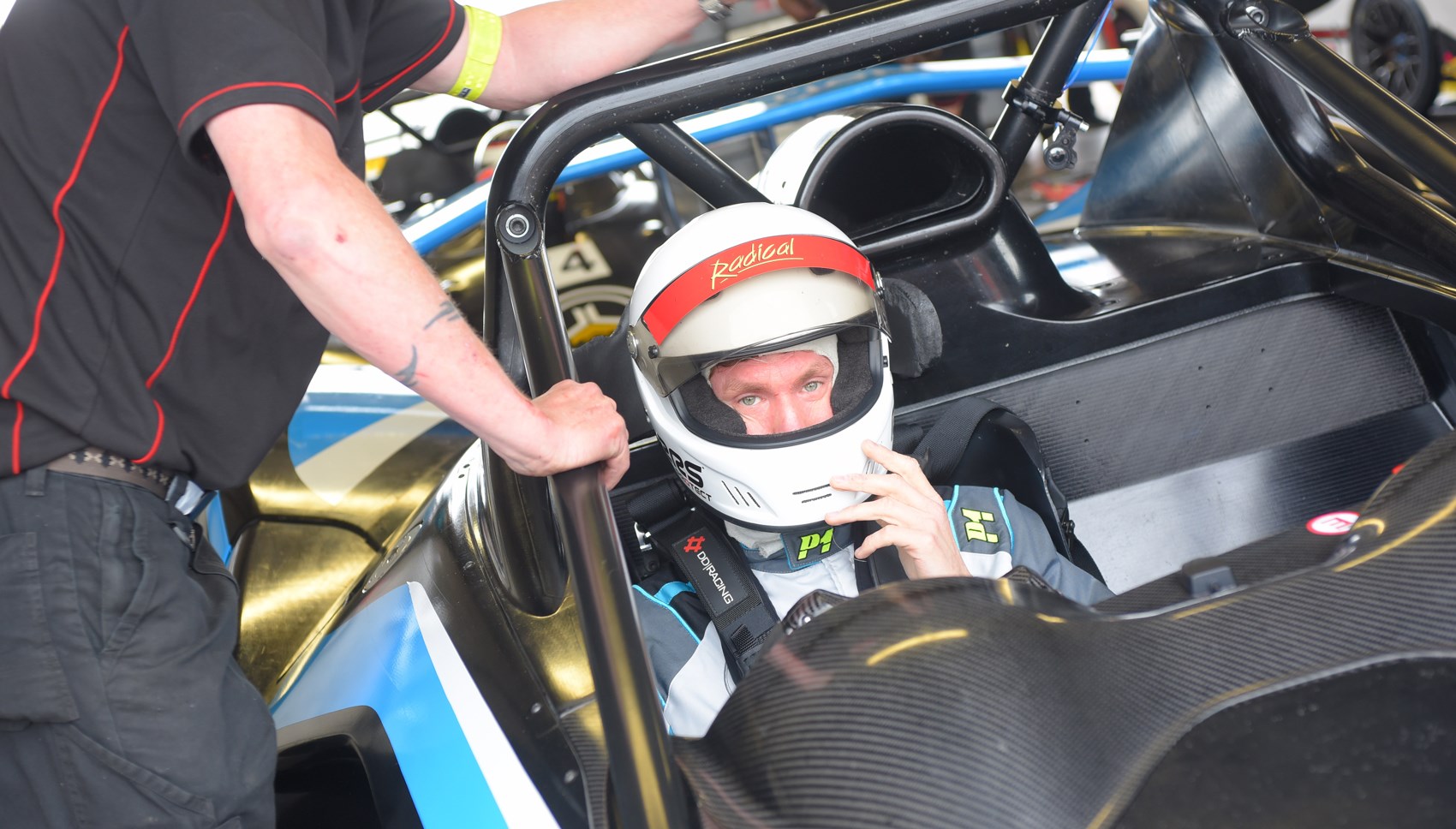
It’s roomy, too. This is very much a two-seater, and the carbon chassis has been designed with bowed sides to allow as much space as possible for a driver and an instructor for coaching, or a friend for scaring – although in this case there’s just the one seat fitted, as we’re about to go racing in the UK Sports Prototype Cup at Donington Park.
Your hands grasp a carbonfibre F1-style cut-down steering wheel, upon which most of the car’s controls are sited. Dash switchgear is limited to colour-coded toggles for master, ignition, and starter while the wheel takes care of rear lights, radio, pitlane speed limiter and everything else. Its inbuilt screen has a variety of clear, well-designed displays to choose from, and it has a clever warning system, flashing messages such as low shift pressure, high oil pressure and so on as a yellow Post-It note-style message – click a button near your thumb to get rid of the message, and if it’s something serious it’ll tell you again. If it’s something really serious, it can automatically go into a limp mode or shut down the engine to protect the owner form a costly rebuild.
What’s under the engine cover?
A 3.7-litre Ford V6, developing 330bhp – plenty in a car that weighs 785kg, although with all that downforce the chassis can handle more. For 2020, power has increased to nearly 400bhp.
If pure performance was paramount, the choice could have been a four-cylinder turbo, but reliability and usability was the goal. So instead of a peaky, high-revving four-pot there’s the V6, chosen for driveability and affordability, not least in terms of running costs. The engine should take 100 hours of hard use before it needs servicing. One of the development cars has done around 6000 miles (and they’ve been hard miles, trialling various lubrication systems and more), and the engine’s still going strong.
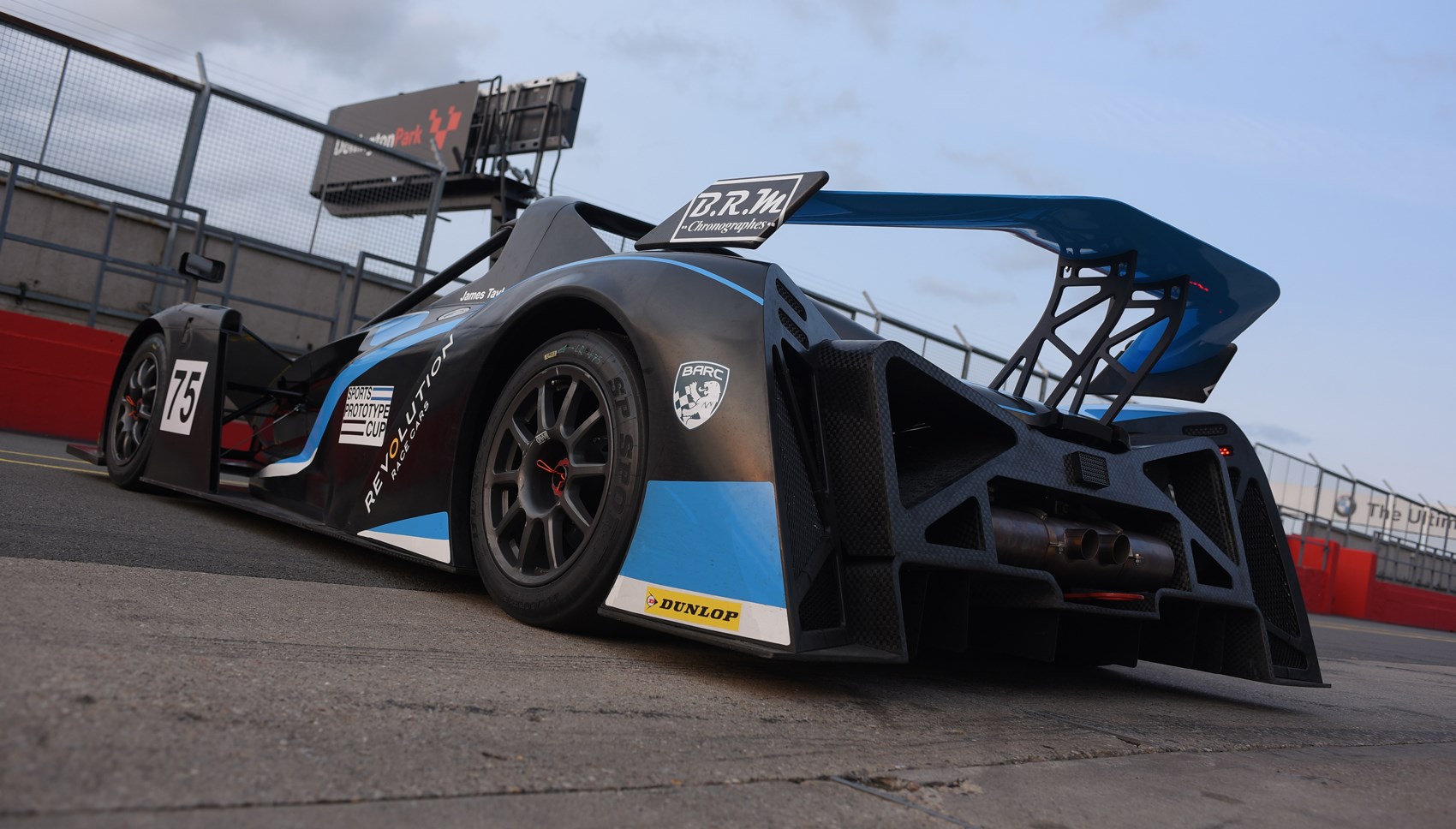
To lower the V6’s centre of gravity, Revolution has engineered its own dry sump system and flywheel.
The rear wheels are driven via a six-speed gearbox by French supplier 3MO, similar to those used by WRC cars. The engine and transmission are stressed members of the chassis, with the rear suspension mounted to the gearbox’s bespoke casing.
Double-wishbones meet inboard dampers and adjustable anti-roll bars front and rear. The dampers are three-way adjustable; Nitrons are standard, pricier Ohlins units an option.
To reduce running costs, components such as the uprights and rockers are identical at each corner, so if you’re unfortunate enough to suffer a prang, it’s more affordable to rebuild.
What’s the Revolution like to drive?
Fast. And physical.
First taste of the car is during an open test day at Donington Park with all kinds of other machinery out there, from prototypes to GTs and Touring Cars. You know you’re driving something quick when you find yourself following a BTCC car that appears larger and larger at every corner, as the Revolution reels it in.
The steering is unassisted, and with wide slick tyres and plenty of downforce it becomes heavy in fast corners, particularly while plunging through the formidably quick downhill Craner Curves. Little wonder when the Revolution is claimed to pull as much as 2.2 lateral g.
For 2020, five-step adjustable power steering has been added, a big help in staving off fatigue on long stints. On five-out-of-five, it’s really quite light but can feel odd; the best feel and control comes from its lower settings, and it’s still possible to switch it off completely should you wish.
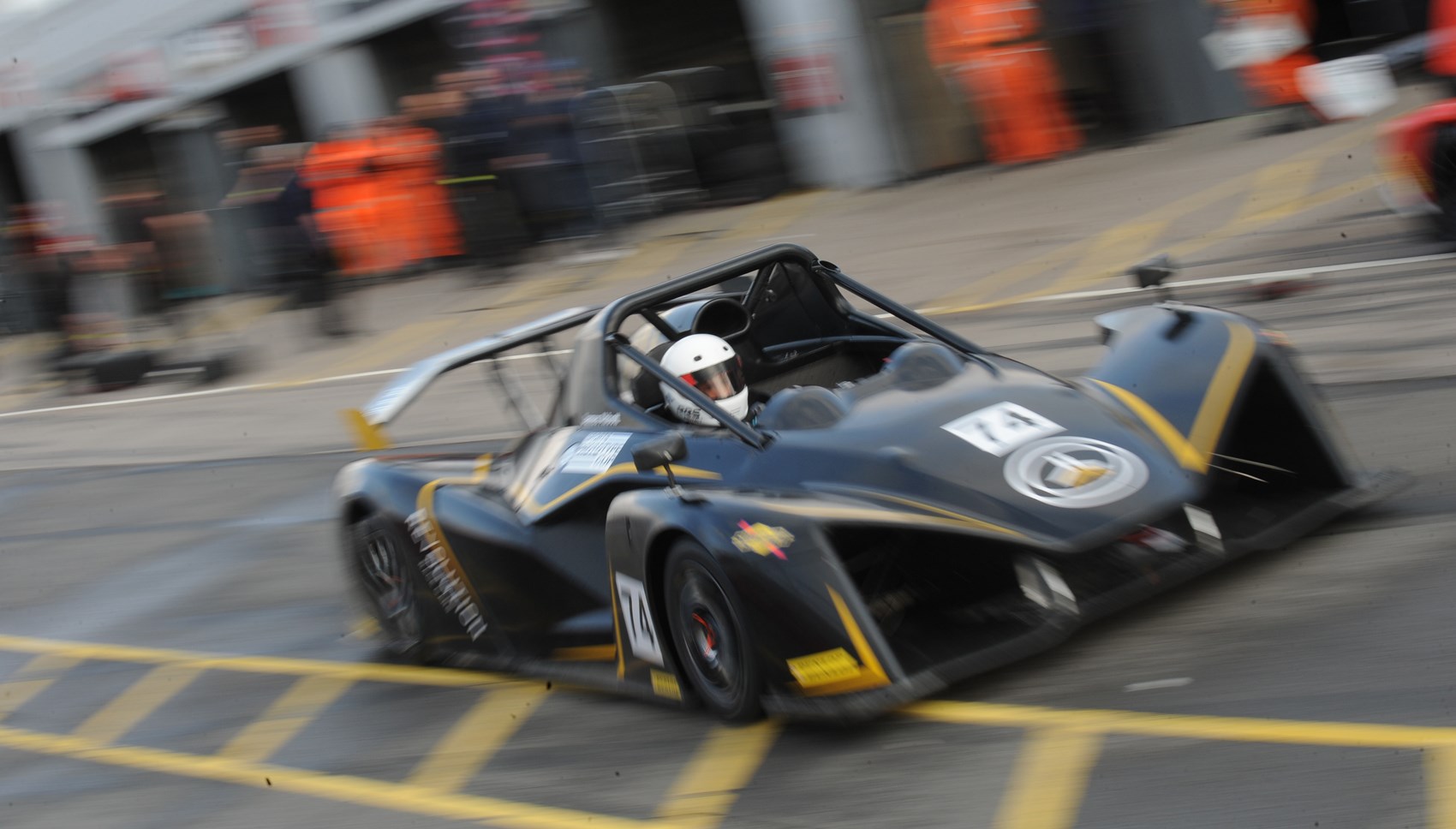
Like many racing cars, the A-One’s clutch uses a foot pedal to get underway, which is relatively heavy, long-travel and needs slipping like a hillstart to avoid stalling. Once you’re up to speed you needn’t touch it again.
The pedalbox in this car is set up for left-foot braking, but can be reconfigured for right-footers. The brakes are stunning; you can really attack them, leaving your braking far later than you might ever expect. The Revolution can pull as much as 2.5g as it decelerates. The unassisted brakes are relatively heavy, no bad thing as it provides plenty of feel, particularly as you blend off the pedal.
One of the closest things I’ve driven to the Revolution previously is the Radical SR1 in 2016 and the A-One feels more grown-up, in more ways than one. Apart from being wider, longer and faster, you also feel the extra weight of a V6 behind you in place of the Radical’s motorcycle-sourced engine. You have to be faster to react to oversteer to keep on top of matters than you do in the lighter Radical, but conversely there’s so much grip and traction that oversteer is much less of a factor.
Traction control may be an option in the future for track day customers to lean on as they get up to speed.
The V6 sounds as muscular as it looks. I usually forego earplugs in track cars (perhaps foolishly) but you need them in this one; the induction noise is extreme and rings in your ears for some time afterwards if you don’t plug them beforehand.
The pneumatic gearbox is a marvel, downshifts slotting in as quickly as you demand them, and never unbalancing the car; useful in the wet. There’s good feedback from the shift paddles too, with a tactile click to confirm every gear – something many road cars could learn from.
It feels very much like I’d imagine an open-top LMP racer would feel, and visibility is far greater than it would be in a closed-cockpit LMP3 car. Despite the absence of a windscreen there’s virtually no buffeting at high speed, the little carbon bumps that form aero shrouds ahead of the cockpit doing their job nicely.
What’s it like to race the Revolution?
In the UK, the Revolution races in its own class within the new Sports Prototype Cup championship, currently in its first season. Ultimately, as more cars are built, the plan is for dedicated one-make series for the car to form. In the meanwhile, the Prototype Cup includes separate classes, one for Revolutions, one for Radical SR3s and a further invitation class.
We’re near the very start of the Revolution’s story, and at the time of writing three cars have been constructed – two development cars and the very first full production car – in this case with yours truly at the wheel, fresh from a quick go in the test day mentioned above. The other two cars are in the hands of Revolution’s lead development driver James Abbott and RAW Motorsport’s Rob Wheldon. Our car really is box-fresh, with around an hour of running time before it was transported to Donington.
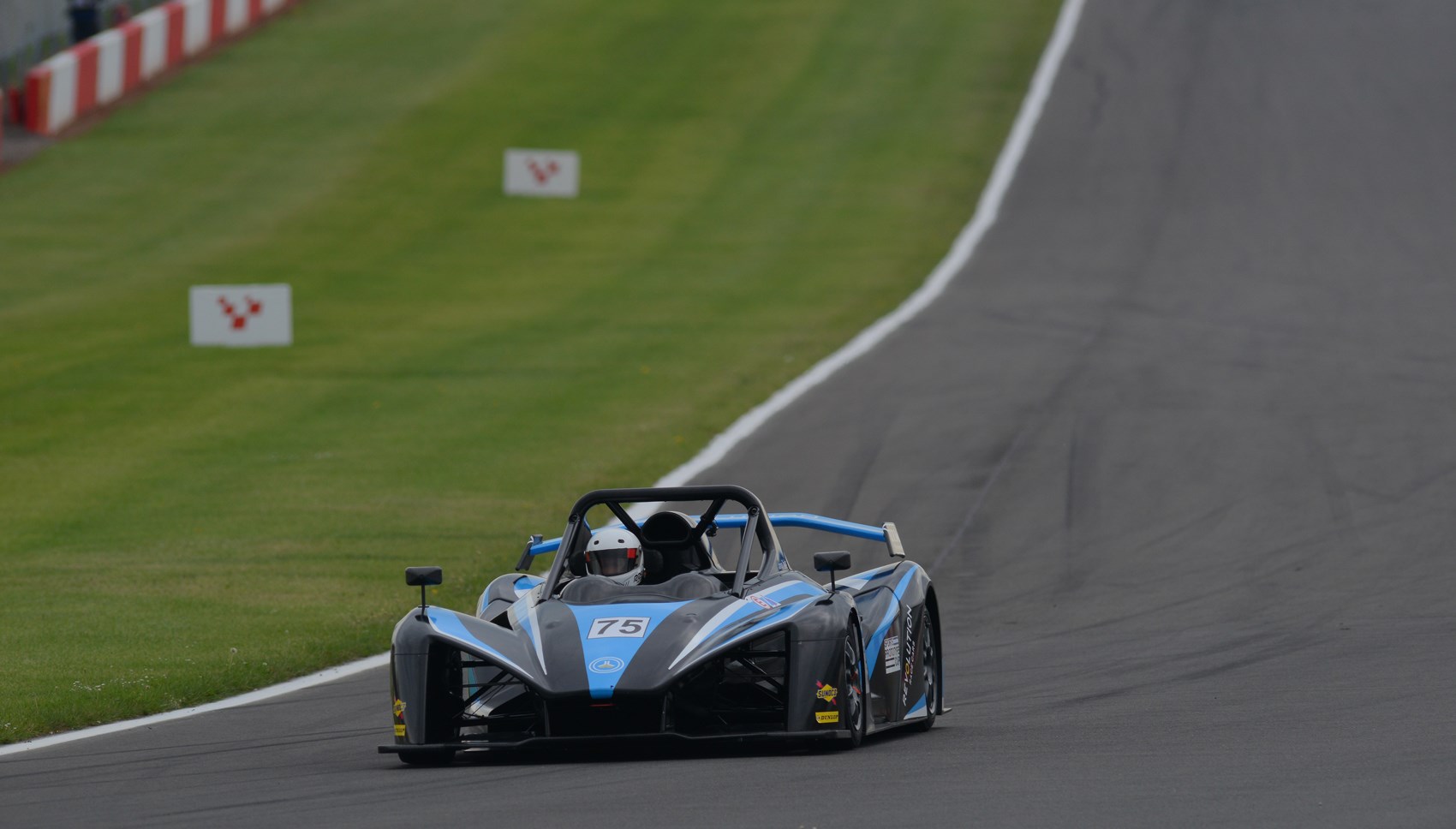
It suffers minor problems in practice and qualifying with electronic gremlins – nothing untoward, just natural teething troubles for a brand-new car nearing the end of its development, but it means I’ll start the races from the back of the grid, having been unable to complete any full-speed laps in qualifying. The problem persists in Race 1 and it’s a terminal pitstop and retirement for me, but Rob and James in the other two Revolutions prove the cars’ pace beyond doubt by finishing one-two.
For the next races, James kindly swaps cars with me, so he can help diagnose the issue in the production car while I get a run in the seasoned development car.
In the meantime the heavens have opened and a summer shower has soaked Donington Park. Luckily it turns out the A-One is more than a bit handy in the wet. The Sports Prototype Cup operates rolling starts for the races and we roll down the start-finish straight in grid formation for Race 2, eyes peeled for the lights to go out, revs in the sweet spot in second gear. Wait for it, wait for it – bam, lights out, throttle pedal hits the stop and the V6’s torque hauls the A-One past two cars in front before we’ve even reached the end of the pitwall.
Turning into the first corner, the LMP2-spec Dunlops (control tyres for the Prototype Cup series) bite through the waterlogged surface and the Revolution’s combination of easy, flexible torque from low revs and plenty of traction fast-track it out of Redgate. This is turning out to be a real weapon in the wet. On the next lap, I follow a Radical SR3 down Craner Curves, duck out of the rooster tail of spray and drive clean around the outside of it – something I never expected to be doing this morning. Let alone doing the same thing to another one at the next corner.
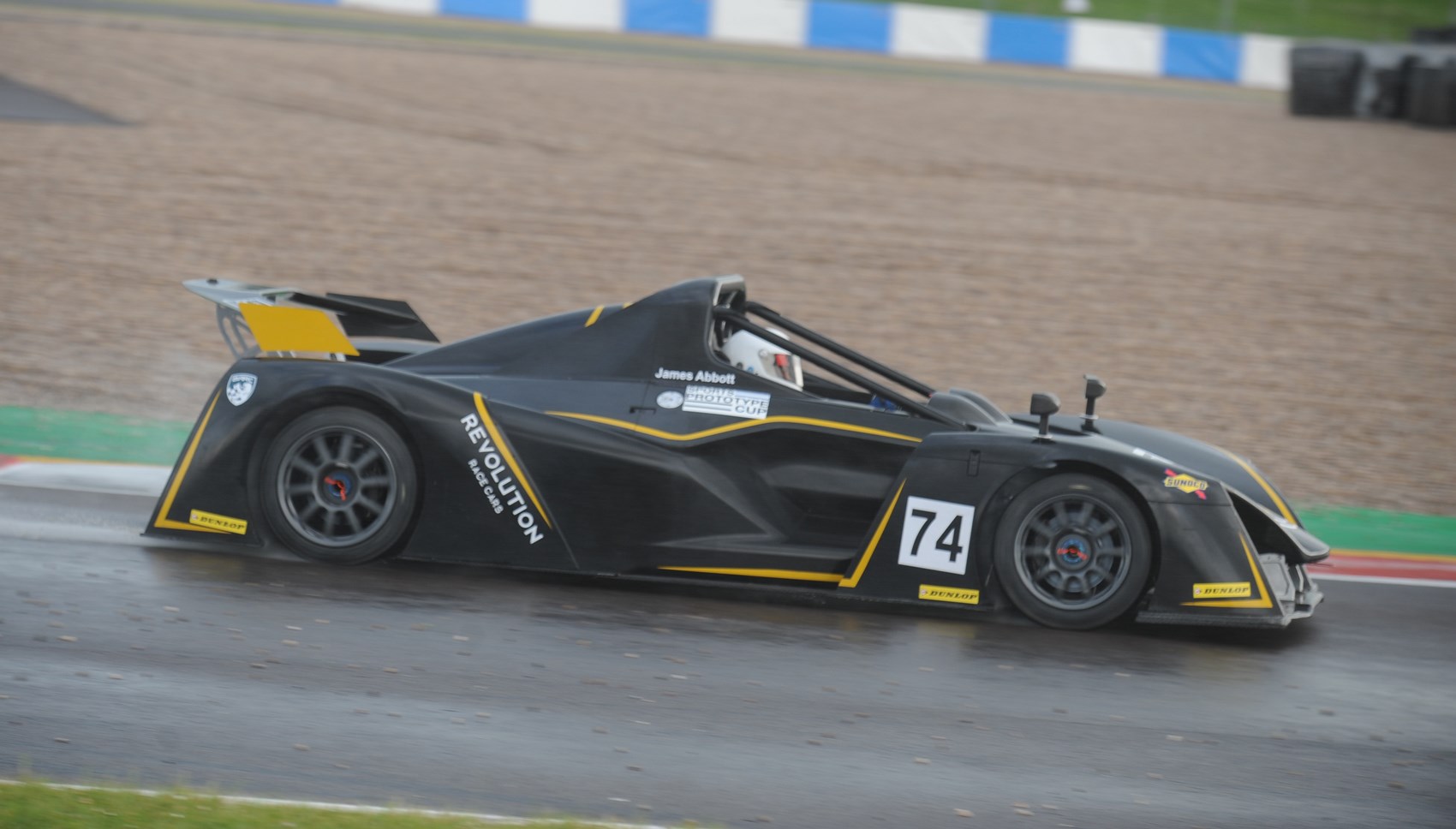
Five laps in, the Revolution has taken me from the back of the grid to the back of the Radical in second place, seemingly without trying. Wow, this feels invincible… I wonder if I can get on the power slightly earlier at Coppice…? Big mistake; a fraction of a second later my arms are crossed on full opposite lock but it’s not coming back. The V6’s weight takes over and the Revolution pirouettes harmlessly and frustratingly into the gravel trap, where its aerodynamic floor turns shovel and digs it in irretrievably. It’s the first time I’ve DNF’d a race through my own doing, and it feels horribly embarrassing. On track Revolution win again however, as Rob Wheldon takes his second win of the day.
Good news is, the car’s completely undamaged, and the expert Valour Racing squad running the car soon have it cleaned up and ready to go for the third and final race of the day, a 50-minute enduro featuring a mandatory pitstop. The track starts soaking wet for this race too, but by middle-distance it’s dried dramatically and it’s a case of walking a tightrope on melting wet tyres, driving off-line to cool them on the straights and trying to avoid sliding around too much in the corners (good fun though it might be). The Valour team bolt on a set of slick tyres during the pitstop and in the final laps the track’s practically dry. It’s a chance to finally drive the Revolution flat-out on one of the country’s best circuits and fantastic, breathless fun. The braking performance, high-speed stability and relentless torque make it an intense, addictive experience. Crossing the line in sixth place overall, the feature-length race feels like it’s passed in the blink of an eye.
Meanwhile, the team have sorted the problems the production Revolution had been suffering earlier on, and James Abbott takes a great win, gambling on slick tyres at the start of the race, surviving the treacherous early laps and overhauling the rest of the field as the track dries.
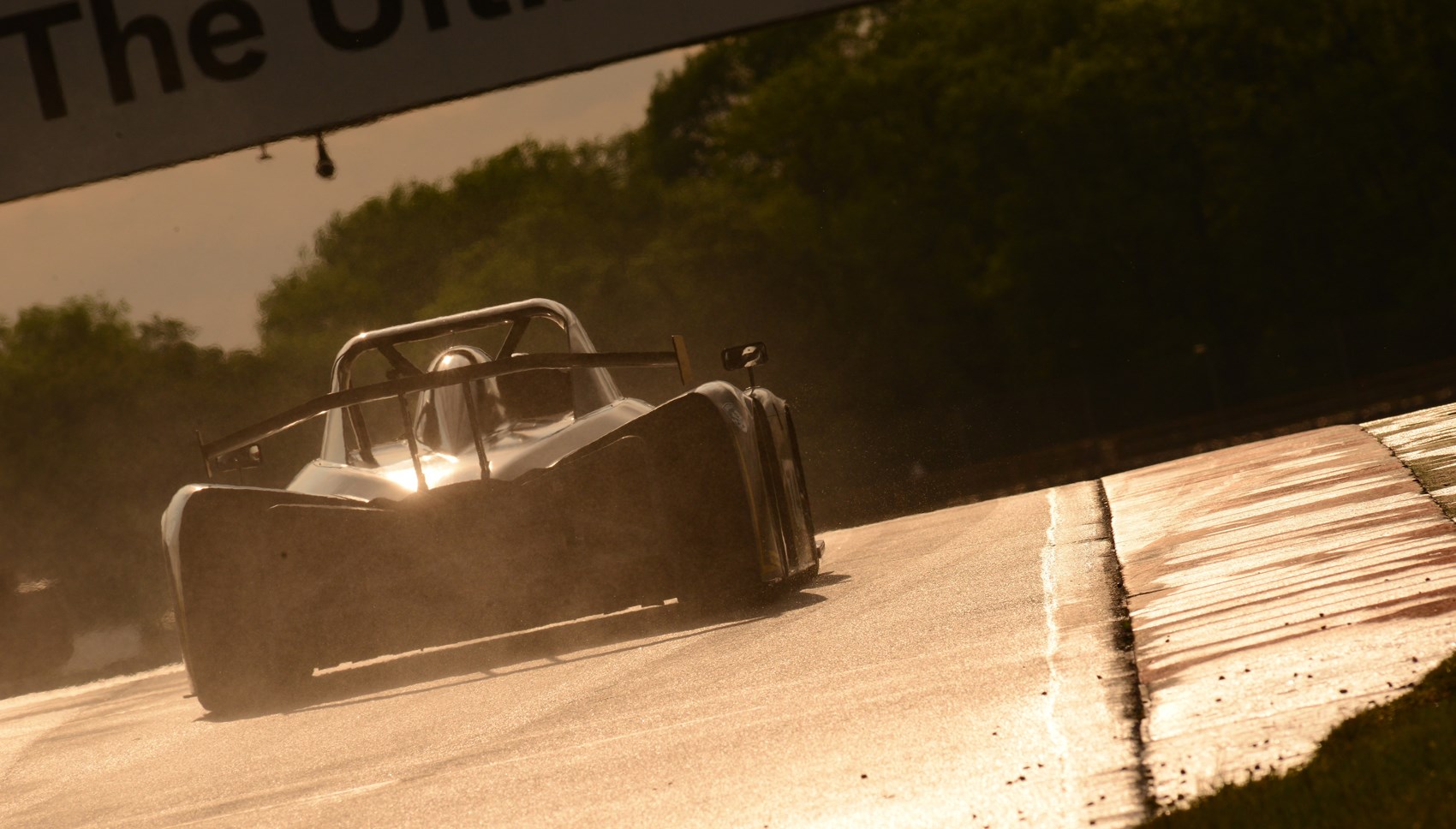
Revolution A-One: verdict
When we first drove the A-One in June 2019, its creator Phil Abbott reckoned it to be at around ‘5% of its potential.’ Even in its nascent form, it was already a highly impressive car which not only feels highly able from a dynamic standpoint but, just as importantly, a well thought-through machine conceptually.
Since this review, we’ve sampled the Revolution again and it’s yet more impressive: substantial aero upgrades, along with a third-element damper to keep the car’s rake stable as downforce builds, have increased downforce by as much as 40%, and made it more stable and forgiving. The power steering makes it less physical to drive, while increased power makes its performance more brutal. It’s more challenging, and engaging, than a GT car, while capable of vastly higher cornering speeds than anything below a GT3 or LMP3 car. It’s an addictive machine to drive.